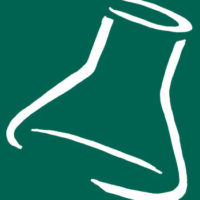In May 2003, when the Canadian Food Inspection Agency (CFIA) announced that a six-year-old cow slaughtered in January 2003 was diagnosed positive for bovine spongiform encephalopathy (BSE), or “mad cow disease,” the Canadian beef industry was decimated as exports, even to the U.S., dried up. In a previous article by the author (BSE in the USA: How Mad Can We Get? Food Safety Magazine, August/September 2003), the history of transmissible spongiform encephalopathies (TSEs) in food animals was discussed and the Canadian case placed in perspective. The following U.S. resp-onses were suggested as appropriate for immediate implementation:
1. Test all animals for BSE at slaughter that are older than five years, and exclude them from the food supply.
2. The specified risk materials (SRMs), or brain, eyes, spinal cord, small intes tine, tonsils, etc., and advanced recovery meat (ARM) of cattle older than 30 months should be excluded from the food supply (both animal and human).
3. All “risk” (i.e., non-ambulatory) animals should be tested for BSE.
4. A system of positive ID tracking should be implemented.
5. The U.S. Department of Agriculture (USDA) budget for TSEs should be substantially increased.
6. All deer and elk should be excluded from the food supply.
Unfortunately, little action took place by regulators in the U.S., who believed the problem still was confined to Canadian beef.
In December 2003, the USDA announced the discovery of the first U.S. BSE case from a farm in Washington State. The animal was identified as a six-and-a-half-year-old shipped from Alberta, Canada in 2001. The USDA and the beef industry again attempted to portray the problem as solely a Canadian one, although significant changes in surveillance and slaughtering were implemented. These changes corresponded roughly to points 2, 3 and 5 above, although the SRMs were to be excluded only from the human (but not animal) food supply. Subsequent discovery of two other cases of BSE in Canada in January 2005 further solidified official opinion that the problem of BSE was restricted to Canada, and not to the U.S.
From January 2004 to July 2005, more than 400,000 high-risk animals (viz., non-ambulatory, central nervous system disorder suspect, wasted or injured, or dead) have been tested for BSE using principally the enzyme immunosorbent assay-based Bio-Rad rapid test kit in duplicate. During that time, only three presumptive positive cases (euphemistically renamed “inconclusive” by USDA) were found. Subse-quent retesting by immunohistochemistry (IHC, a traditional low-sensitivity staining test dubbed by USDA as the “gold standard”) found all three results as “unconfirmed.” Attempts by consumer activists to either get the presumptive positive samples tested by independent laboratories (e.g., UK-Weybridge) or by the more commonly used and more sensitive Western blot method proved fruitless.
The American beef supply thus appeared safe from the BSE that plagued our northern neighbor, and the disease (inexplicably) did not appear to cross the border with the tens of millions of Canadian live cattle that had been processed here over the last decade.
“Science Goes Out the Door, When Politics Comes Innuendo!”
Unfortunately, the rosy scenario promulgated by USDA and the beef industry was not in accord with scientific expectations. First, it is extremely unlikely that the Canadian situation is separable from that of the U.S., given the historical strong intermixing of the two national herds. Second, even if this were so, more Canadian-derived cases of BSE in the U.S. would be expected, just as had been found in Canada itself (which was so far responsible for four cases of BSE in a national herd one-tenth the size of the American one). Third, the USDA changes in slaughtering practice guaranteed that high-risk animals were of little value to renderers, who now demanded payment for processing instead of paying for the animals. Consequently, ranchers now had little incentive to pass the animals on to rendering. In the words of Alberta Premier Ralph Kleinon on the subject of high-risk animal disposal: ranchers should “shoot, shovel and shut up” when confronted with a high-risk animal. This would guarantee that a considerable proportion of the highest risk animals might, in fact, never be sampled and tested. Finally, USDA was staunchly opposed to any independent testing for BSE (in stark contrast to all other pathogen testing performed in the food industry for other diseases) and made the testing for BSE by any other than its own directly controlled labs illegal.
Mishandling of a high-risk carcass in Texas in 2004 led to an investigation of USDA’s surveillance program by its Inspector General, Phyllis Fung. Her OIG investigation uncovered a number of irregularities, including the fact that the presumptive positive of November 2004 had actually tested positive by another, experimental test but USDA had not disclosed this to the public or taken further confirmation steps other than the usual IHC, which came back negative. Ms. Fung directed that USDA retest the three presumptive positive samples by the real “gold standard,” the Western blot test. The November 2004 sample came back positive (quickly dubbed by USDA as a “weak positive” in the new BSE-speak). The sample was then sent off to UK-Weybridge, where it was indeed confirmed as BSE-positive.
Other problems with USDA’s testing protocols also surfaced, including mishandling and mismarking of samples and the very interesting fact that UK-Weybridge apparently had no difficulty in obtaining an IHC-positive result, as well as Western blot, on the submitted sample.
Source of the Confirmed BSE-Positive
The animal involved in the November 2004 BSE-confirmed sample was a southern Texas bred, born and raised Brahmin cow. The animal was some 12-years-old when sent to slaughtering, and she was known never to have visited Canada or even congregated with Canadian cattle. It was also extremely fortuitous that she was actually tested for BSE. The cow had at times some difficulties in standing, but did so during most of her trip to the abattoir. Fortunately for consumers, she died before reaching the slaughterhouse and was then transferred to a renderer, where she was flagged for sampling.
Conclusion: The November 2004 BSE-confirmed positive case cannot be attributed to Canada. Astonishingly, current FDA policy still allows high-risk animals to be rendered into swine feed.
Incidence of BSE in Canada and the USA
In the second article of this series (BSE in the USA Redux: How Mad Are We Getting? Food Safety Magazine, February/March 2004), an upper 97.5% confidence limit of BSE cases in the Canadian national herd of approximately 10 million animals was estimated at about 60, and in the 100 million U.S. national herd at around 140. Under the assumptions of valid, unbiased sampling of the high-risk population, the European Union (EU) experience suggests that about an equal number of BSE cases would occur in the healthy-at-slaughter population as is observed in the sampled high-risk population. These cases would currently pass silently into the human food supply in North America. In addition, perhaps as many as half of the high-risk BSE cases may be not sampled, due to dead-on-farm or sacrifice-on-farm disposals.
Based on the 30,000 Canadian tests performed to date (during a period of about a year and a half), with three positives attributable to the “high-risk” group (an incidence of 1:10,000 tested), and under the assumptions stated, the expected number of BSE cases passing silently into the human food supply is expected to be about two cases per year (95% confidence interval 0.7 to 5.8). When corrected for on-farm disposals, this changes to a worst-case of four cases per year (95% confidence interval 1.4 to 11.6).
Based on the more than 400,000 U.S. tests performed to date (also during a period of about 18 months), with one positive found and under the same assumptions, the expected number of BSE cases passing silently into the human food supply in the U.S. is expected to be one per year (95% confidence interval 0.2 to 3.7). When corrected for on-farm disposals, this changes to two cases per year (95% confidence interval 0.4 to 7.4).
However, given the atypical test result obtained for the confirmed sample, the inhomogeneity of infectious material in samples and the rarity of presumptive positives (<1:100,000 tests), it seems highly likely that all of the rapid test presumptive positive results observed are true cases of BSE of one form or another. Under this assumption, the expected number of BSE cases passing silently into the human food supply in the U.S. is then expected to be three per year (95% confidence interval .7 to 5.8) or, corrected for on-farm disposals, a worst-case of six per year (95% confidence 1.4 to 11.6).
The Good News and Bad News The “good news” is that all positive BSE cases found to date have originated from animals born before the feed bans instituted in 1997 in North America. This is, of course, expected, because BSE is not easily detectable in young animals and symptoms do not appear until the disease has spread throughout significant portions of the brain.
The “bad news” is that, if contaminated feed is the source of the BSE observed, then clusters of cases would be expected, not single events. Subsequently, recycling of cattle remains prior to 1997 would have amplified the number of cases significantly. So it would be expected that BSE is now “percolating” in the less-than-eight-year-old adult cattle subpopulation.
Another alternative is random genetic mutation giving rise to rare BSE cases (the so-called Gibbs Hypothesis, originated by Clarence Gibbs of National Institutes of Health). However, this would simply change the source of the index case. Recycling still would have led to contaminated feed prior to 1997. It would mean, however, that we will continue to find a low rate of BSE in animals born, event after a “perfect” feed ban.
Of course, no feed ban has ever been implemented 100% in its first year or two. The feed bans were probably only taken very seriously in 2003 when the first North American BSE case was discovered. Also, feed bans in the U.S. and Canada are not as complete as in the EU, where SRM materials are forbidden to any food animal, not just ruminants. Thus we still have a few more years of BSE-positives to suffer through before the adult cattle population is fully purged of born-before-ban animals.
What Should We Do Now?
Regardless of questions raised about sampling, testing and reporting BSE cases in the U.S., even the worst-case exposure estimated above is not likely to result in any measurable impact on public health in North America. The EU experience has so far shown only about one case of variant Creutzfeldt-Jakob disease (vCJD) per 1,000 BSE cases found. Applied to North America, this would suggest only one case or fewer of vCJD as a result of our past, present and future BSE problem.
Now that native-born BSE have been discovered in both Canada and the U.S., prudence suggests we take the following measures:
• Test for BSE in all animals born before the 1997-1998 feed ban, healthy or not, at slaughter.
• Test all “high-risk” animals for BSE.
• Extend the feed ban to exclude SRM materials from feed for any food animal.
• Institute a surveillance plan for vCJD in the U.S., and make vCJD reportable.
• The government or the beef industry should set up a $1 million indemnity fund for any confirmed vCJD case in the U.S. This should help mollify fears and improve consumer opinion.
Ultimately, USDA should purge politics from its surveillance and disclosures. The beef industry can only be seriously injured by quibbling, “BSE-speak” and cover-ups. Candor and frankness will defuse the BSE issue and make it less newsworthy.
Robert A. LaBudde, Ph.D., has been president of Least Cost Formulations, Ltd., since 1979, and has served on the faculties of several universities through the years among them the University of Wisconsin, MIT and North Carolina State. Dr. LaBudde is well known throughout the meat industry for his contributions in the areas of food safety, chemical analysis and quality control. He has published numerous research articles, holds several patents, and has provided consulting services to more than 100 major manufacturers.
Among his many professional activities, Dr. LaBudde has been a Bell Atlantic Scientist, an Associate Referee of the Association of Official Analytical Chemists and a member of the Scientific Affairs Committee of the American Meat Institute. He is a Charter Diplomate of the American College of Animal Food Science. His previous Food Safety Magazine articles are posted online at food-safety.com.
Author’s note: A current review of TSEs was recently published in the June/July 2005 issue of the Journal of Food Science, and is available free online at http://bookstore.ift.org/store/iftstore.









